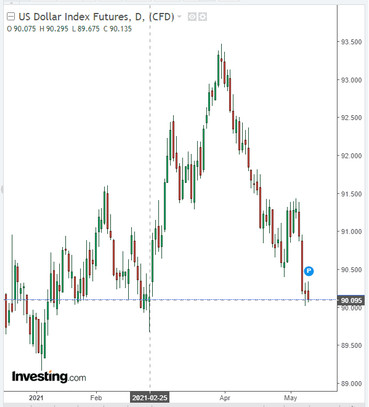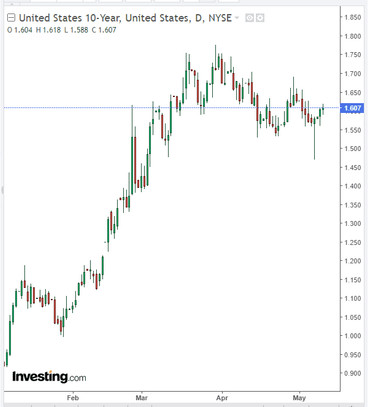Having confidently broken through last week the important long-term resistance level passing through the 1793.00 mark (see Technical Analysis and Trading recommendations), the XAU / USD pair continues to rise today for the fifth trading day in a row. At the time of this article publication, it is traded near the 1840.00 mark, maintaining positive dynamics.
The demand for gold and the growth of the XAU / USD pair are supported against the backdrop of falling global stock indices and accompanied by increased inflationary expectations. This precious metal, although it does not generate investment income, is popular with investors as a defensive asset and a hedge against the risks associated with rapid inflation in the United States and the world.
In this regard, and taking into account the rise in inflationary expectations, the attention of market participants will be drawn to the US CPIs, which will be released on Wednesday (at 12:30 GMT). CPI indices help to understand the Fed's position on the possible rollback of stimulus measures, and allow assessing the prospects for the gold market. CPI is expected to rise in April.
However, a new rise in the yield of US Treasury bonds, which could also provoke a rally in the dollar, may become a threat to the growing quotations of gold.

As of this writing, DXY futures are traded near 90.10 mark, 11 points below Friday's close. The yield on 10-year US government bonds in the past few weeks has stabilized near 1.600%, which is below the local multi-month maximum of 1.776% reached at the end of March.

While Treasury yields have not significantly changed or increased, and Fed officials are patient with rising inflation and government bond yields, gold manages to maintain the positions it won in April and early May.
For the Fed to begin cutting back on the economy, "we need to see stronger employment data", and inflation must consistently exceed the central bank's 2.0% target, Chicago Federal Reserve Chairman Charles Evans said in an interview on Monday CNBC.
It will take some time “for we to actually see this in the economic data and assess the situation”, before moving on to phasing out the stimulus, Evans said. Recall that the US central bank currently maintains short-term interest rates near zero (0.25%) and continues to purchase assets in the amount of $ 120 billion per month. Labor Department data released on Friday indicated much weaker employment growth than economists had expected, pushing back even further the timing of a possible start to curtail stimulus programs by the Fed, which is a negative factor for the dollar and positive for gold quotes.
The dollar is likely to continue to fall until new economic data shows again that the US economy and labor market are recovering at a faster pace than other advanced world economies.





